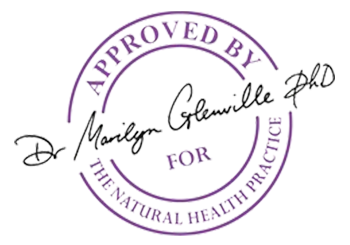Omega 3 (Finger Prick) Deficiency Test by Post
Why is that problem? Well, your body makes beneficial prostaglandins (which are hormone-like substances) from these essential fatty acids. These 'good' prostaglandins help to prevent inflammation and pain (including period pains), regulate the immune system and reduce abnormal blood clotting. But the body can also produce ムbadメ prostaglandins which increase inflammation, pain and abnormal blood clotting. These 'bad' prostaglandins are produced from Omega 6 fatty acids whereas the 'good' anti-inflammatory prostaglandins are produced from Omega 3 oils.
That is why having a good ratio of Omega 6 to Omega 3 fatty acids is so important. Years ago we...
 Mineral Deficiency Test by Post
Previous
Mineral Deficiency Test by Post
Previous

With all the news in the press about the benefits of having good levels of Omega 3 essential fatty acids e.g. prevention of heart disease, inflammation, stroke, cancer, dementia, depression, chronic fatigue it is important that you know whether or not you are lacking in this vital nutrient and whether you have the correct ratio of Omega 3 to Omega 6 fatty acids.
It is now possible for you to find out by taking a simple blood test.
Over the last century there has been an 80% decrease in the consumption of Omega 3 fatty acids and with our diet very high in Omega 6 fatty acids fatty found in many vegetable oils, we are ending up with the problem that we have too much Omega 6 in the body and not enough Omega 3.
Why is that problem? Well, your body makes beneficial prostaglandins (which are hormone-like substances) from these essential fatty acids. These 'good' prostaglandins help to prevent inflammation and pain (including period pains), regulate the immune system and reduce abnormal blood clotting. But the body can also produce 'bad' prostaglandins which increase inflammation, pain and abnormal blood clotting. These 'bad' prostaglandins are produced from Omega 6 fatty acids whereas the 'good' anti-inflammatory prostaglandins are produced from Omega 3 oils.
That is why having a good ratio of Omega 6 to Omega 3 fatty acids is so important. Years ago we all used to get a good balance of Omega 3 and Omega 6 oils from our food but now a typical Western diet contains nearly 10 times more omega-6 from the increased use of vegetable oils and seeds) than omega-3 (oily fish, soya, linseeds) resulting in much higher levels of these 'bad' inflammatory prostaglandins in our normal diets.
Also if you are vegetarian and get your Omega 3 fatty acids from oils like flax (linseeds) the body has to convert the oil to EPA (which we get directly from fish) and it is now thought that this conversion is not very efficient. It is estimated that from linseed (flax) oil only 5-10% is converted to EPA.
Your body cannot manufacture Omega 3 essential fatty acids, they have to come from your diet or as supplements so it is vital that you are getting the correct ratio.
Symptoms of an Omega 3 deficiency can include dry skin, dry hair, depression, poor concentration, weight gain and menstrual irregularity.
When ordering this test you will receive a special kit, with full instructions, that will enable you to take a simple finger prick sample at home and this is then sent directly to the laboratory in the packaging provided. When analysed you will be sent the results showing your balance of Omega 3 to 6 and recommendations as to how to correct the imbalance if you have one. With this specialised test you will not only be given your Omega 3 to 6 ratio but also find out your levels of Omega 9, Omega 7, EPA, DHA, industrial trans fat, saturated fats and alpha-linolenic acid. You will also be given suggestions when to re-test in order to make sure the levels are back to normal.
So if you want to find out if you are getting enough Omega 3 fatty acids from your diet and whether you have the correct balance of essential fatty acids, then you should order this Omega 3 Deficiency Test now.
Samples should be returned to the laboratory by Next Day Delivery, Monday- Thursday only. Samples received outside of the suggested postage dates may be discarded and the patient asked to repeat the test.
Please Note: This test is only available by post in the UK. Please allow 5-6 weeks to receive your results.
Please be advised that the tests that you have bought on the Natural Health Practice will be managed by our recommended clinic Glenville Nutrition Clinic.
If you need any further information about how your personal data is used please contact help@naturalhealthpractice.com
Quality Assured
All the NHP supplements included in this programme have been given Dr Marilyn Glenville PhD's Exclusive ‘Seal of Approval
To be awarded Dr Glenville’s Exclusive Seal of Approval all NHP supplements have been formulated and personally checked and approved by Dr Marilyn Glenville PHD, the UK’s leading nutritionist specialising in natural health.
To comply they need to be in the correct form, the right dosage level and of the highest quality to ensure maximum bio-availability and absorption in order to increase their effectiveness and produce the greatest benefit and be free from all non-active and chemical excipients.
All formulations must conform to Dr Glenville’s demanding criteria:
- Only 100% active ingredients included
- In their most bio-available form to aid absorption,
No minerals in the form of chlorides, carbonates, oxides or sulphates.
Vitamin C in alkaline form rather than the acidic ascorbic acid form
Vitamin D as D3 not D2
Vitamin B6 in the active form of pyridoxal-5-phosphate and not the cheaper pyridoxine form
Natural vitamin E as d-alpha tocopherol not synthetic dl-alpha tocopherol - Free From: gluten, dairy, yeast, artificial flavours, colours, additives, preservatives, added sugar, sweeteners, benzoates, maltodextrin, nuts and nut traces and soya* *(except Meno Herbal Support, Advanced Brain and Memory Support and Advanced Hearing Support)
- Free From - fillers, binders, anti-caking agents, lubricants eg magnesium stearate, titanium dioxide, talc, calcium hydrogen phosphate dehydrate, stearic acid.
- Contained in vegan* capsules - no bovine gelatine used
*(excluding Omega 3 Support and Advanced Marine Collagen Support which are in vegetarian capsules) - No genetically modified organisms (GMOs)
- Registered with the Vegetarian Society*
*(excluding Omega 3 Support and Advanced Marine Collagen Support which are in vegetarian capsules) - Registered with the Vegan Society*
*(excluding Omega 3 Support and Advanced Marine Collagen Support which are in vegetarian capsules) - Kosher and Halal approved
- Omega 3 fish oil. High Strength made from wild deep-sea fish and from the body of the fish not the liver. In natural triglyceride form. Screened for contaminants. Frends Of The Sea certified
- Manufactured, batch tested and certified in the UK
- Contained in glass bottles for easy recycling
Thanks to Dr Glenville’s 30+ years’ experience and stringent quality control checking procedures, you can be confident that any product with Dr Glenville’s Exclusive ‘Seal of Approval’ is effective, safe and healthy for you to use.
Does all this really make a difference?
When you take vitamins, minerals, and herbs, you aim to give your body the tools to heal itself and maintain good health.
Unfortunately, many supplements nowadays contain unnecessary and potentially harmful substances, making your body work harder to eliminate them.
You may not realise that they can be full of ‘nasties’ - non-active ingredients - like, fillers, bulking and anti-caking agents, disintegrants and lubricants.
These chemicals are in there to help the manufacturing process flow through the machines.
Good for the machines maybe but certainly not good for your body.
If your body expends energy dealing with these substances, it may divert energy from other areas essential for maintaining or restoring good health, potentially causing additional health problems and low energy.
It's crucial that the vitamins, minerals, and herbs you consume contain only the highest quality ingredients possible and are Free From all nasties.
Not all supplements are made equal, and knowing what to look for is important.
Sounds daunting doesn’t it?
But don’t worry because, if you don’t have the time or inclination, (or a degree in chemistry), to go round reading labels on every pot of vitamins or minerals, Dr Glenville has already done the work and scrutinised the labels for you.
And only when she is completely satisfied that the products are Free From all the ‘nasties’ and in their most bio-available form and at the highest safe dosage level will she award it her ‘Seal of Approval’.’.
You can rest assured that all NHP supplements have Dr Glenville’s exclusive ‘Seal of Approval’ and are safe, effective and healthy for you.
If you would like more help and guidance please email one of our nutritionists, who will be pleased to recommend an appropriate course of action for you, by clicking the button below:





